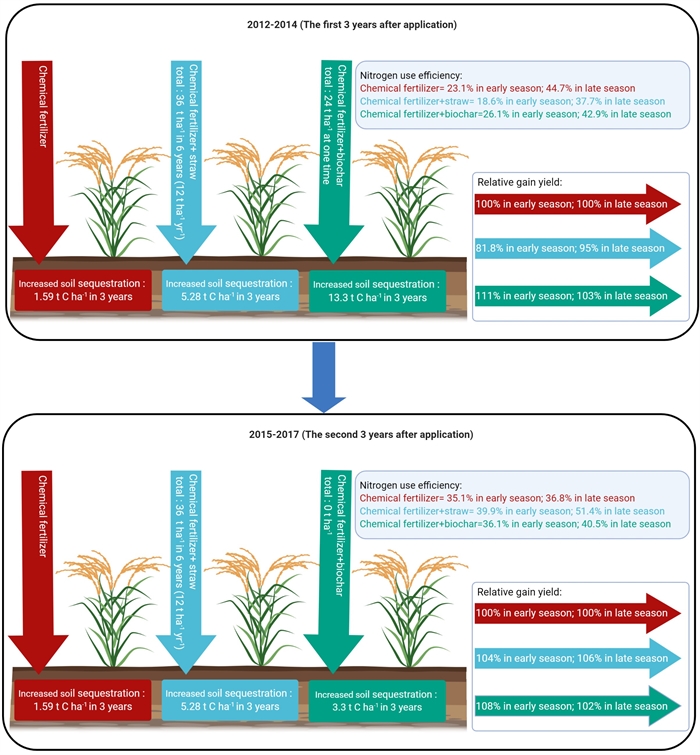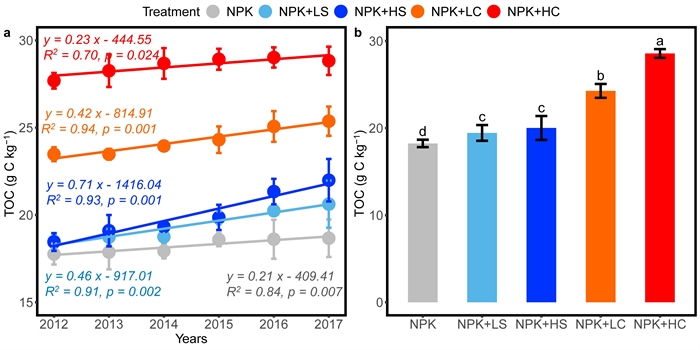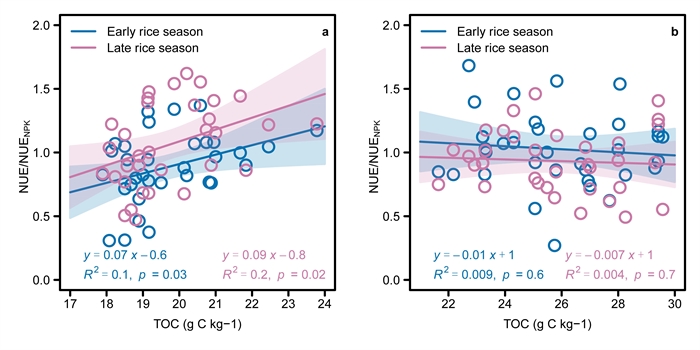Biochar Exhibits More Potential in Soil Carbon Accumulation but Less in Nitrogen Use Efficiency than Straw
Biochar is a kind of loose and porous material with high carbon content. It is produced through the cracking of organic materials under conditions of less oxygen or no oxygen. The application of biochar on agricultural land can increase soil carbon sequestration, reduce greenhouse gas emissions, improve soil fertility, and boost crop yields.
However, longer-term effects of biochar application in farmland, especially after one-time application, remain unclear.
Researchers from the Institute of Subtropical Agriculture (ISA) of the Chinese Academy of Sciences systematically studied the effects of straw return and straw-derived biochar applications on soil total organic carbon (TOC) accumulation and nitrogen use efficiency based on a six-year field trial in paddy fields.
The study was published in Agriculture, Ecosystems and Environment on Jan. 30.
The amount of straw returned to the field in the experiment was set at 3 t ha-1 (half amount of straw returned to the field) and 6 t ha-1 (full amount of straw returned to the field) per season, and the amount of straw-derived biochar was set at 24 t ha-1 (low amount of biochar returned to the field) and 48 t ha-1 (high amount of biochar returned to the field) in a single application.
The researchers found that the biochar treatment sequestered 2.6-fold more soil carbon than the straw treatment when the biochar and straw treatments had the same amount of straw input over the six-year cycle. That means the biochar application has a higher carbon sequestration potential than straw return to paddy fields.
Under straw returning to the field, the ratio of grain and straw nitrogen contents and the ratio of nitrogen use efficiency between the straw treatment and the control treatment both increased with the increase of soil organic carbon. Among them, half and full straw return increased late rice season nitrogen use efficiency by up to 22.3% and 39.8%, respectively after four to six years as compared with the control treatment, showing a significant carbon and nitrogen synergistic effect.
The study indicates that the synergistic effect of carbon and nitrogen on straw return to paddy fields can promote nitrogen uptake and carbon input, which is conducive to reducing fertilizer use and improving nitrogen use efficiency.
Contact: SHEN Jianlin
E-mail: jlshen@isa.ac.cn
Institute of Subtropical Agriculture, Chinese Academy of Sciences

Fig.1 Changes in soil carbon sequestration, rice gain yield and nitrogen use efficiency under full straw return and low biochar applications in 6 years.

Fig. 2 Interannual changes in the total organic carbon (TOC) in double-rice cropping systems with straw and straw-derived biochar treatments from 2012 to 2017 (a) and significance test of the difference in TOC (b).

Fig. 3 Effects of total organic carbon (TOC) on nitrogen use efficiency (NUE) in straw and biochar treatments: nitrogen use efficiency in NPK treatment (NUENPK) in the early and late rice seasons. (a) straw treatments/NPK treatment; (b) straw-derived biochar treatments/NPK treatment.
Download attachments: